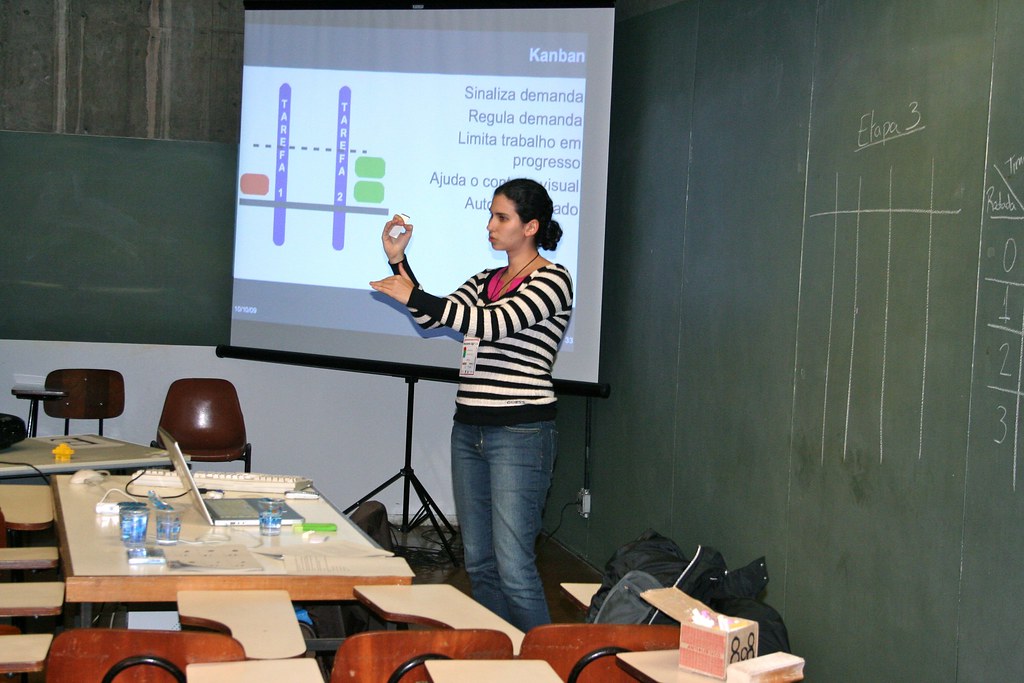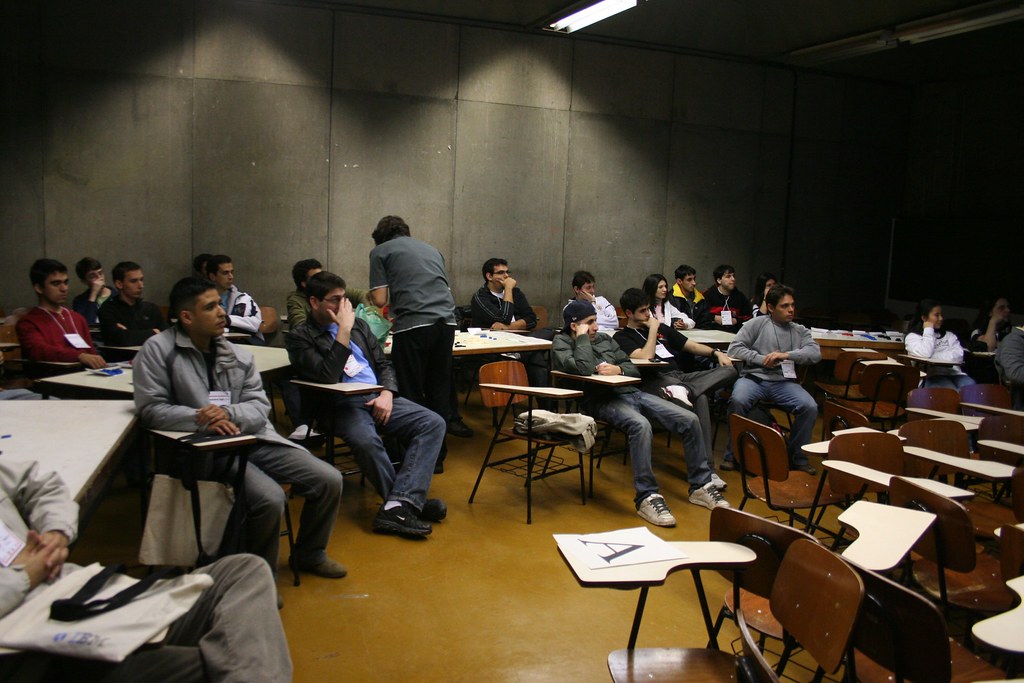After lunch on Tuesdays I was assigned as a volunteer. On the first slot I took care of "Speed Up Your Testing With Acceptance Criteria Conversations". It wasn't really my favorite session to attend to but I needed some time to rest my mind so I took profit of being near the wifi area (believe me, there was only 1 free wifi spot in the conf) to check my emails and catch up with the world a little.
On the second slot, I joined
Danilo Sato and
Frank Trindade in the Lean Lego Game session they ran.
The Lean Lego Game - Danilo Sato & Francisco TrindadeThe session was a workshop and, by the way it was built, it couldn't handle more than 30 people participating actively. Since I was on duty I couldn't join the teams but had the pleasure to help. The session started up talking a bit about Lean, velocity and cost but mostly explaining that lots of people in the software industry now have heard of Lean but few of them really understand the context in which Lean was born. I'll skip the talk part (slides are available at
here) and go the game itself since it was the most interesting part to me and it is the one that brings back to that first Lean context.
The participants were divided in four groups of 7 to 8 people each. Each group was in a table and had another table with a few Lego pieces nearby. The idea is that those four groups simulated a house factory that could do houses of four different colors. There were 3 rounds was constituted of 4 sprints of 30 seconds each. Each round followed a slightly different production system.
The first round simulated a production line. The group closer to the talkers were the assembly workers and their responsibility was to assembly a house. The next group was the selection group responsible for collecting the right amount of each part to build a house from a pile of parts from a certain color. The next group was the one responsible for the coloring separation. Their job was to get pieces and separate them into four piles, each with one color. Finally, the farther away group was responsible for "buying" resources from the big Lego bag and providing them (no more than a certain a amount of each kind) to the other group. Each person of the group should have a task and could not do anything other than that task. At the end of each sprint,
Patrick Kua (the house factory customer) selected two colors (randomly from a card deck) for the houses he wanted to buy to simulate a push system where things were done BEFORE the clients manifested a wish for them (like North American car factories used to do).
In that scenario, each group knew what do to from start and they followed the colors chosen by the client for that sprint. At the end of each sprint, the talkers collected the results of each group. They counted how many houses were delivered, how many resources were consumed on each stage and the total. This way, the first sprint didn't manage to deliver any houses. Colors were sorted by the client and in the second sprint, the team delivered two houses but one was not from the colors the customer wanted. Another two colors were sorted and one matched the extra house in stock. On the third sprint, the team delivered another two houses but one of them didn't match the requested ones. The last sprint delivered two other matched house. The customer picked another two colors and couldn't get a match so the team ended up delivering 5 houses.
The session then talked a bit about could have gone wrong. And the team felt many of them were not having work to do or were doing the wrong work because they didn't know what they should be doing.
So the second round changed the system to pull system. Meaning the teams were supposed to work exactly in the same way internally but the client would pick the card at the start of each sprint and the supplier teams would provide supplies of the colors selected by the client. Results were much more impressive this time and the team managed to deliver one house successfully on the first sprint, two houses on the second and third sprint and three houses on the last sprint. This way they ended up with 8 houses sold. However they still consumed more "money" than the houses "paid".
This brought up the problems related to keeping a stock and still having people not aware of the whole process. The presenters then introduced the idea of Yatai. So the last round followed a Yatai where each person was responsible for building one house by themselves just picking from the piles available near their tables. Instead of having fours sprints of 30 seconds, the team was given one big sprint of 120 seconds. It ended up that the team managed to deliver 16 houses and the stock was severely reduced.
Although I couldn't be part of a team, I really had a lot of fun. People were running around, trying desperately to do their best and getting frustrated over the systems they were forced in. I think Danilo and Frank really managed to bring up one of the key issues brought up by Lean ideas and had a great timing to swap between presentation and activities.
I loved the workshop so much that I will be presenting an instance of it at
Encontro Ágil 2009 on the 10th of October (next week) in São Paulo. If you want to learn a bit more about Lean and personally feel the industry issues that modeled Lean, join us and help us improve this workshop even more.







